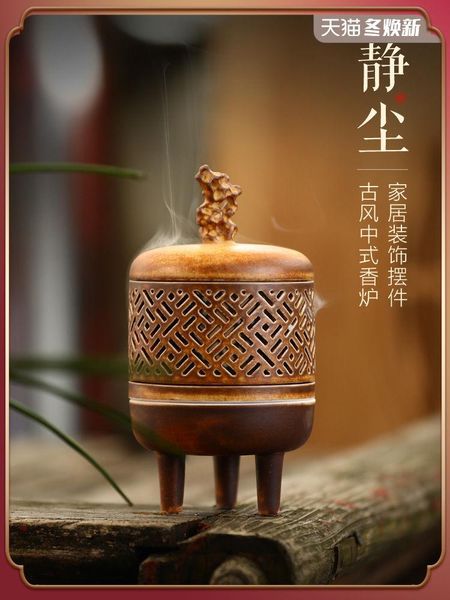Turning Point: Oribe and the Arts of Sixteenth-Century Japan
Описание
Japan's Momoyama period (1573-1615) was brief but dramatic, witnessing the struggles of a handful of ambitious warlords for control of the long-splintered country and then the emergence of a united Japan. It was an era of dynamic cultural development as well, for the daimyos commissioned innovative artworks to proclaim their newly acquired power. One such art was a ceramic ware known as Oribe, which, appearing mysteriously and suddenly, rose to prominence for use in the tea ceremony. Boldly painted and displaying playful new shapes, these dashing wares matched the extroverted world of the warlords. Similar stylistic and technical inventiveness characterized painting, lacquerware, and textiles of the period. Eleven essays by leading scholars and about two hundred catalogue entries present outstanding examples of all these extraordinary works and examine the social and cultural contexts in which they were created.
График изменения цены & курс обмена валют
Пользователи также просматривали

$93.05
Бюстгальтер-бикини SALI top foam чашка B с регулируемым контуром и бретелькой, завязывающейся на шее Red Point, синий
cdek.shopping
$427.73
Компьютерный стол с регулировкой высоты PROtect, LITE, 34275, белый/коричневый 120x60 см, LA-SR2
goods.ru
$13.71
Блузка женская повседневная в клетку, рубашка с длинным рукавом, воротником с лацканами и пуговицами, с карманами с клапаном
aliexpress.com
$460.68
68 Four Stroke Electric Starter High Power Gasoline Pickaxe Drilling Machine Portable Rock Digging Honey Impact Drill Rock
aliexpress.com
$6.62
Elm327 Wifi V1.5 Obd2 Wifi Diagnostic Scanner For Multi-Brands Can-Bus As Same As Elm327 Wifi
aliexpress.com
$5.51
Newborn Baby Girl Valentines Day Outfit Long Sleeve Romper Dress Heart Print Tulle Bodysuit Headband Set
aliexpress.com
$8.59
7392 Baby Girl's Bodysuit Or T Shirt 2023 Autumn New Corduroy Embroidered Girl's One Piece Clothes Embroidery Collar T Shirt
aliexpress.com
$0.64
1 pc Hearing Aid Drying Agent Earmold Desiccant Pallet Drying Capsule For Hearing Aid
aliexpress.com
$7.67
Exquisite Craftsmanship Flower Emblem Sticker for Car Truck SUV Hood Body High Quality Materials and Fashionable
aliexpress.com
$8.62
Автомобильная наклейка, легкость, наклейки, простота в эксплуатации, украшение для дома
aliexpress.com
$2.64
Wireless Headphone Protective Case Compatible for Jbl Tune Buds Cover Shockproof Washable Housing Antidust Sleeve
aliexpress.com
$248.00
6050A2977601 For HP ProBook 14-CK Laptop Motherboard With CPU i5-8250U PN:L23232-601 100% Test OK
aliexpress.com
$87.37
X Shogun TIB Crusher. Premium Tibialis Training Bar. Protect Your Ankles, Shins & Knees from Injury. Improve Speed & Ath
aliexpress.com
$15.02
Hummingbird Decors Clear Lovely Bird Decoration Hummingbird Ornament Hummingbird Pendant Decorative Hummingbird Decoration
aliexpress.com
$2.95
For iPhone 15 Case Armor Protect Cover For iPhone 15 Pro Max Case Silicone Rubber Shockproof Phone Stand Capa For iPhone 15 Case
aliexpress.com
$16.51
VANHAO 2022 New Winter Clothes Patchwork Basic Printed Dress Women V Neck Sweater Mini Dresses Women Wholesale Dropshipping
aliexpress.com
$13.34
Outdoor Memorial Butterfly Sculpture Decoration Sympathy Gifts for Cemetery Yard Courtyards Decoration Remembrance G5AB
aliexpress.com
$14.31
1 PCS Fuel Pump Filter 1 PCS Fuel Pump Strainer Plastic White Direct Replacement Easy Installation Electric Components 2006-2007
aliexpress.com
$13.66
7 Pcs Rechargable Glowing LED Dices Role Playing Game Polyhedral Dices LED Electronic Dices for Tabletop Game Player
aliexpress.com
$27.11
Зимняя женская Ультралегкая тонкая куртка на белом утином пуху, Длинные куртки с капюшоном, теплое пальто с длинным рукавом, парка, Женская портативная верхняя одежда
aliexpress.com
$34.67
OLEVS Quartz Watch for Women Luxury Brand Golden Tungsten Steel Case Waterproof Dual Calendar Fashion Elegant Ladies Wristwatch
aliexpress.com
$0.52
Cap Valve Stems TR413 Tyre Accessory Black SET Tool Tubeless Snap In Type Exterior Replacement High Quality New
aliexpress.com
$7.43
Women Heart Print Sweater Valentine’s Day Pullovers Long Sleeve Round Neck Knitted Blouse Casual Loose Sweatshirt
aliexpress.com
$11.36
Летняя Солнцезащитная одежда, тонкое большое пальто для рыбалки, Мужская дышащая легкая Солнцезащитная одежда
aliexpress.com
$2.77
2 Wires Door Light Switch Jamb Button Sensor Fit for Suzuki Esteem Sidekick Chevrolet Geo Tracker 37670-61A00 30015438
aliexpress.com
$21.52
Игрушечный набор для хранения фигурок динозавров, семейный игровой набор, обучающая игрушка, коробка для хранения головы динозавра, игрушка на Пасху
aliexpress.com
$7.94
Busy Cloth Book Travel Sensory Toy 3D Cloth Book Fine Motor Skills Educational Learning Activities Travel Toys For Little
aliexpress.com
$0.34
Stainless Steel Seat Fishing Reel Seat Deck Rod Clip Holder Fishing Tool Fishing Rod Clip Wheel Reel Holder Fishing Tackle
aliexpress.com
$49.11
Ni-MH 12V rechargeable battery for Panasonic's original EY9200 EZ9200 EY9108 EY9201B EY3790B EY6100FQKW cordless drilling rig
aliexpress.com
$5.28
For iPad 10.2 (2019) / (2020) / Air 10.5 inch (2019) Shockproof Case Anti-Drop Auto Wake / Sleep Solid Color Pattern Imprinted Leather Tablet Cover with Card Slots / Stand - Brown, iPad 10.2 (2019)
tvc-mall.com
$117.14
Спортивный костюм oversize cargo с капюшоном и высоким необработанным ном Boohoo, угольный
cdek.shopping
$15.22
cluster rings omhxzj wholesale european fashion woman girl party birthday wedding gift flower zircon 18kt gold 925 sterling silver ring rr94, Golden;silver
dhgate.com
$30.52
Summer Men Women Designer Shoes Slippers Slides Sandals Black Fluo Green White Cool Grey Beige Blue Pink Yellow Mens Rubber Slipper Slide Sandal Shoe 36-45, Neon gradient
dhgate.com
$49.61
chinese cheongsam for women winter parkas coats stand button floral warm retro jacket oriental style clothing ethnic, Red
dhgate.com
$64.57
fragrance lamps modern statue incense burner cermatic bowl cover smoke holder backflow bruciatore incenso oil warmer ea6xxl
dhgate.com
$42.22
casual dresses spaghetti strap off shoulder backless summer female v neck ruffle mini elastic waist solid party vestidos ek60, Black;gray
dhgate.com
$22.22
slippers fruit cute soft plush cotton women non-slip floor indoor shoes house home furry bedroom for sh527, Black
dhgate.com
$85.15
dress d family skirt 21 spring and autumn classic old flower letter jacquard v-neck thin knitted long sleeve women 12, White;black
dhgate.com
$16.79
New Women Winter Fluffy Shaggy Coat Faux Fur Round Neck 3/4 Sleeves Hook and Eye Outerwear White/Black
tomtop.com







